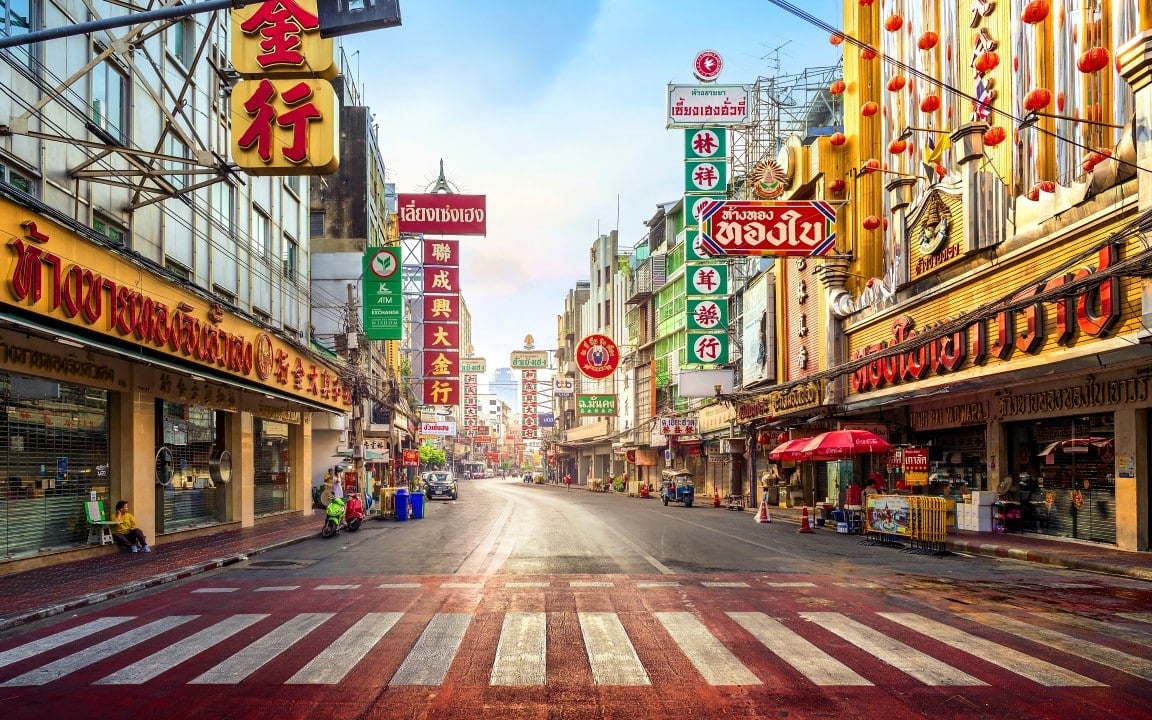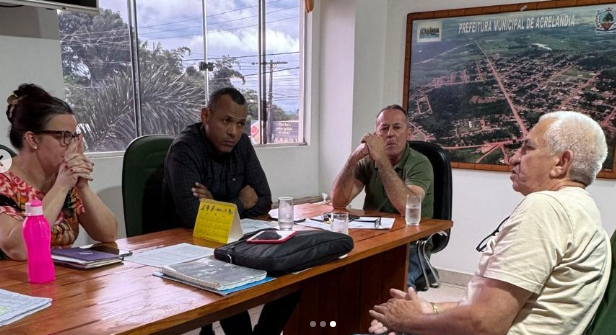
A powerful magnitude 7.7 earthquake struck central Myanmar on the afternoon of Friday, March 28, local time, sending shockwaves that reverberated hundreds of kilometers to Thailand’s capital, Bangkok. The quake, recorded at a shallow depth of 10 kilometers, had its epicenter near Mandalay, Myanmar’s second-largest city, and unleashed scenes of chaos across the region. In Bangkok, a skyscraper under construction collapsed, trapping 43 workers beneath the rubble, while in Yangon, Myanmar’s economic hub, residents fled buildings in droves. Details on fatalities remain scarce, but the structural toll is already evident in both nations.
The United States Geological Survey (USGS) reported the earthquake hit at 1:20 p.m. local time, with coordinates roughly at 96.12°E and 22.07°N, about 16 kilometers northwest of Sagaing, near Mandalay. Its shallow depth amplified its intensity, causing low-frequency seismic waves to rattle high-rise buildings in Bangkok and neighboring provinces. Videos from the scene captured water spilling from structures in the Thai capital as alarms blared through the streets, urging people to safety. Witnesses described the ground shifting for nearly a minute, prompting widespread evacuations.
ÚLTIMA HORA
Un terremoto de 7,7 en Myanmar derrumba múltiples edificios, con epicentro cerca de Mandalay. En Bangkok, Tailandia, un rascacielos en construcción colapsó.
Esto está sucediendo en Bangkok. pic.twitter.com/ZvJsK2oA8x— Decko. (@Frankzm) March 28, 2025
In Myanmar, the situation unfolded with equal urgency. Yangon residents called the quake “sudden and intense,” with people rushing outdoors as the tremor persisted. Social media posts revealed debris-strewn streets and damaged buildings, though some images await verification. The epicenter’s proximity to densely populated areas raises fears about the extent of destruction, particularly in a nation where infrastructure is often ill-equipped to handle natural disasters.
Roughly 12 minutes after the initial jolt, a magnitude 6.4 aftershock struck the region, heightening panic. In Bangkok, Thai Prime Minister Paetongtarn Shinawatra declared a state of emergency, mobilizing rescue teams to aid those trapped in the collapsed skyscraper. Local police noted the building was still under construction, potentially explaining its susceptibility. Meanwhile, Myanmar’s limited communication networks hinder efforts to assess the full scope of the disaster.
Immediate impact in Bangkok and beyond
Bangkok, a bustling metropolis of over 8 million people, experienced the earthquake’s effects dramatically. High-rise buildings in the city center swayed for seconds, driving hundreds into the streets for safety. A journalist in the capital recounted a frantic scene in his apartment, with light fixtures swinging wildly as residents evacuated. The resonance of seismic waves in tall structures fueled widespread alarm.
In the Chatuchak district, a construction site turned into a disaster zone when a skyscraper crumbled, unleashing a cloud of dust over the area. Emergency crews raced to the scene, though the exact number of workers present during the collapse remains unclear. So far, 43 individuals are confirmed trapped, and authorities worry the casualty count could rise as rescue efforts progress. Nearby buildings, including offices and shops, were cleared out as a precaution, halting activity in one of the city’s busiest hubs.
Northern Thai provinces like Chiang Mai also felt the tremors, albeit less intensely. A local resident reported a 10-second shake in his home, prompting him to seek shelter outside. The prime minister ordered inspections of critical infrastructure, such as bridges and roads, to check for damage that could threaten public safety.
Damage reported in Myanmar
Myanmar, home to the quake’s epicenter, faces compounded challenges in its aftermath. In Mandalay, a historic city of about 1.3 million, initial reports point to significant damage to roads and buildings. A 90-year-old bridge in the Sagaing region, southwest of the city, collapsed, severing a key link between Mandalay and Yangon, the country’s largest city. The highway connecting these urban centers sustained damage in multiple sections, complicating transport and aid delivery.
Yangon, over 600 kilometers from the epicenter, wasn’t spared. A resident described the quake as a minute-long jolt, followed by a chaotic exodus from buildings. Religious temples and aging homes, many already in poor condition, suffered partial or total collapses. In Naypyidaw, the administrative capital, journalists noted cracks in structures and compromised roads, underscoring the tremor’s far-reaching power.
The ongoing civil war in Myanmar since 2021 adds another layer of difficulty. With the nation split between military rule and rebel factions, coordinating relief efforts may falter. Spotty communication infrastructure further delays accurate reporting on injuries and destruction, especially in rural zones near the epicenter.
Seismic history of the region
The affected area lies in a tectonically active zone, driven by the collision of the Indo-Australian and Eurasian plates. This interaction fuels a network of faults spanning Myanmar and parts of Thailand, leaving both nations prone to earthquakes. The magnitude 7.7 event ranks among the strongest in recent years, outstripping prior incidents in cross-border impact.
In 2011, a magnitude 6.8 quake hit Myanmar’s Shan State, killing at least 73 people and injuring over 111. Felt in Thailand and Laos, it caused significant damage in Tachileik near the border. Another tremor in 2016, also 6.8, rocked Bagan, demolishing 60 temples and claiming four lives. These incidents highlight the region’s seismic recurrence, though the current quake stands out for its scale and reach.
The 2004 magnitude 9.1 earthquake off Sumatra, Indonesia, offers a broader historical benchmark. Its tsunami waves struck Myanmar and Thailand, killing thousands and inflicting billions in losses. Unlike that disaster, today’s event triggered no tsunami warnings, but its shallow origin intensified terrestrial damage.
Key affected areas
- Mandalay: Epicenter of the quake, with damage to roads, bridges, and historic structures.
- Yangon: Mass evacuations and partial building collapses.
- Bangkok: Skyscraper collapse and tremors in high-rises.
- Sagaing: 90-year-old bridge destroyed and highway sections impaired.
- Chiang Mai: Mild tremors reported, no major damage so far.
Authorities’ response
Thai officials reacted swiftly. In Bangkok, the emergency declaration expedited the deployment of firefighters, police, and medical teams to the collapse site. Prime Minister Paetongtarn Shinawatra is closely monitoring operations, while engineers assess other buildings’ stability. Schools and offices shut temporarily, and residents were urged to steer clear of at-risk zones.
Myanmar’s response lags due to its circumstances. The military government has yet to release an official tally, though supplies are reportedly en route to hard-hit areas. International aid groups stand ready to assist, pending access approvals amid conflict zones. Myanmar’s Red Cross is preparing shelters and essentials for up to 300 families in Yangon.
Rescue in Bangkok prioritizes the 43 trapped workers. Heavy machinery arrived at the site, with operations expected to stretch into the night given the debris volume. Nearby residents were relocated for safety, and traffic in the area was blocked off.
Timeline of seismic events
The magnitude 7.7 quake unfolded in stages. Here’s a breakdown of key moments:
- 1:20 p.m.: Initial magnitude 7.7 quake strikes near Mandalay.
- 1:32 p.m.: Magnitude 6.4 aftershock jolts the region, escalating fear.
- 1:40 p.m.: Skyscraper collapses in Bangkok, sparking rescue efforts.
- 2:00 p.m.: State of emergency declared in the Thai capital.
- 2:30 p.m.: First damage reports emerge from Yangon and Mandalay.
Broader implications
Beyond immediate destruction, the quake poses economic and social ripple effects. Bangkok, a top Southeast Asian tourism and trade hub, may see disruptions. The skyscraper collapse could prompt scrutiny of construction safety standards, potentially reshaping building regulations.
In Myanmar, the loss of a bridge and highway sections worsens an already strained logistics network. Linking Mandalay and Yangon, this route is crucial for goods and travel, and its disruption could hinder supply chains amid a political and humanitarian crisis. Weak, often outdated buildings underscore the nation’s exposure to natural calamities.
The quake’s reach extended to China, Bangladesh, India, and Laos, though no major damage was reported there. In Shanghai and Fujian province, China, mild tremors were felt without prompting evacuations. Its transnational scope highlights the event’s extraordinary magnitude.
Rescue and recovery challenges
Rescue operations in Bangkok center on the collapsed skyscraper, where the 43 trapped individuals are the top concern. The unfinished structure lacked reinforcements typical of completed buildings, likely contributing to its failure. Teams race against time with cranes and hand tools, while medics stand by for survivors.
Myanmar’s inadequate infrastructure poses hurdles. The Sagaing bridge collapse cut off a vital north-south link, with rebuilding possibly taking months. Villages near the epicenter remain cut off, with limited access to aid. The civil war further complicates external assistance, as many areas are contested.
Residents in both countries show resilience. Bangkok volunteers distribute water and food to the displaced, while Yangon locals clear street debris. Community solidarity offers a glimmer of hope amid the turmoil.
Earthquake facts in the region
- Myanmar sits on the Pacific “Ring of Fire,” a hotspot for seismic activity across Southeast Asia.
- Thailand, though less prone to direct quakes, often feels tremors from nearby nations due to geological proximity.
- The deadliest regional quake hit in 2004, with a tsunami killing over 227,000 across 14 countries.
- Bangkok’s high-rises are built to withstand quakes, but unfinished projects like the collapsed skyscraper are more at risk.
Current status and next steps
Thai officials have yet to confirm a full casualty count, but the 43 trapped in Bangkok remain the focal point. Rescue efforts press on under floodlights as night falls, with operations expected to extend for hours. The prime minister pledged support for affected families and said a comprehensive damage assessment is forthcoming.
In Myanmar, patchy information reflects communication woes. Local teams strive to reach devastated areas, though damaged roads and bridges slow progress. Global organizations monitor developments, awaiting clearance to provide aid.
The magnitude 7.7 earthquake leaves a trail of destruction across borders, impacting millions in Myanmar and Thailand. With structural damage, mass evacuations, and uncertainty over casualties, the region remains on edge as the world watches this historic seismic event unfold.



